Views from theTower
SUMMER 2023 | VOLUME 51 | NO. 2
Martins and Swallows: The Marsh’s Aerial Acrobats
 by Rae Griffiths, Office Assistant
by Rae Griffiths, Office Assistant
Spring migration in Cape May holds many special moments. Whether it be Ospreys returning to nesting platforms; Red Knots scouring the beaches along the Delaware Bay; or colorful warblers traveling north from the tropics, the arrival of migratory birds comes with great anticipation. Every spring, we make special preparations to welcome two aerial acrobats back to the marsh, and this year was no exception.
nest almost exclusively in human-made nesting structures. Native Americans used hollowed gourds to attract Martins, probably recognizing their value as natural insect control. This, along with a loss of natural nest cavities, likely led to this shift in nesting behavior.
While Purple Martins nest in colonies, Tree Swallows like to build their nests with a little more elbow room. We maintain nine or 10 Tree Swallow boxes throughout the marsh here, mounted on poles six feet off the ground and set about 30 feet apart. Each pole has a PVC pipe attached below the box to deter predators. This season, we replaced five older, smaller boxes with new ones constructed to the ideal dimensions to attract Tree Swallows.
experienced significant declines due to increases in human development and the introduction of invasive species like the European Starling and House Sparrow. Today, dedicated efforts to manage nesting boxes/gourds are helping these species recover. Since 2016, nests at The Wetlands Institute have fledged more than 425 Purple Martin hatchlings and almost 40 Tree Swallows.
On March 23, we pulled our two “gourd racks” out of the shed and gave the plastic gourds a thorough cleaning before lining each one with a generous layer of fresh, dry pine needles. We then raised them onto a pole about 20 feet off the ground and waited for the first Purple Martin “scouts” – typically the oldest Martins in a population, returning to previous nesting sites. The first scout arrived at The Wetlands Institute on April 3; there are four dozen Martins now, with pairs in each of our nest gourds.
The Purple Martin is the largest North American swallow, and one of many types of birds that nest communally. Like other swallows, they catch insects as their main food source, wheeling about the marsh to grab them out of the air. Unfortunately, mosquitos are not a major part of their diet, but we can thank Martins for keeping the biting fly populations at bay. On the East Coast, Purple Martins
Once a pair of Tree Swallows selects a nest box, they collect fine dried grass to build a tidy cup nest inside, then line it with feathers before laying four to seven eggs. For most of the year, the Tree Swallows’ diet is predominantly insects, though they supplement with calcium-rich foods like small fish bones, pieces of clamshell, and eggshells. Tree Swallows can also digest bayberries and other small fruits in colder weather when insects are scarce –something no other swallow can manage. This allows them to winter farther north and return to their nesting grounds sooner than any other American swallow.

During the latter half of the 20th century, Tree Swallows and Purple Martins
Both Purple Martins and Tree Swallows are known for their mass migrations in the fall, and the marshes along the Maurice River here in South Jersey are considered the largest staging area for Purple Martin migration. In mid-August, hundreds of thousands of these birds gather to fatten up on insects for their long migration to South America. Each evening, the birds fill the sky above the marsh, swooping and diving in what seems like an orchestrated ballet. Then, all at once, they descend into the reeds to take shelter for the night. These collections of Martins are so large they can be seen on weather radar.
Tree Swallows also congregate in flocks numbering into the hundreds of thousands to migrate en masse toward their wintering grounds – covering power lines, wires, groves of trees, or wherever else they can find a suitable roost. On Seven Mile Beach, large numbers of Tree Swallows feed in the dunes in September in preparation for their long flights south.
Here at the Institute, Purple Martins and Tree Swallows are busy preparing themselves for the business of raising the next generation. Before long, the skies above the marsh will be filled with young birds taking to the air on newly minted wings, honing their flying skills and building strength for their first epic migratory journey. With a little luck, they will be back next spring – and we will be ready to welcome them home again.
wetlandsinstitute.org | 1075 Stone Harbor Blvd, Stone Harbor, NJ 08247 | 609.368.1211
NEWSLETTER ~
Tree Swallow on a nest box
Purple Martin colony
Deborah A. Hays, Chair
James Donohue, Vice-Chair
Hank Schellenger, Treasurer
John Flynn, Secretary
Jeffrey Alderton
Timothy Jon Clay, D.M.D
John Cuthbert
William Hankowsky
Margaret McAllister
John Millar
Jeannie Morris
Staff
Leadership
Marsh M usings
by Dr. Lenore Tedesco, Executive Director

Jeffrey Alderton
Donna Rothman
Raymond Burke, III
Jon Tullis
Annie Ulichney
Amy Welsh
Timothy Jon Clay, D.M.D
John Cuthbert
William Wermuth
Roberta DeVries
Francis J. White III
William Hankowsky
Margaret McAllister
Dr. Lenore Tedesco, Executive Director
Anne Brickley, Director of Administration
Dr. Lisa Ferguson, Director of Research and Conservation
Brooke Knapick, Director of Educational Program Development
Carol Wyland, Director of Finance
Research & Conservation
Julie Blum, Research Scientist
Samantha Collins, Research Scientist
Meghan Kolk, Conservation Scientist
Amanda Lyons, Research & Conservation Coordinator
Brian Williamson, Research Scientist
Education
Danielle Meeker, Aquarist/ Environmental Educator
Kelianne O'Shea, Environmental Educator
Erin Rawls, Outreach Coordinator
Development & Communications
Devin Griffiths, Marketing and Communications Specialist
Rae Griffiths, Office Assistant
Devon Patchel, Administrative Coordinator
Finance
Terrie Campbell, Finance Administrator
Administration
Kirsten Chervenak, Visitor Services Coordinator
Jeff Dix, Maintenance Technician
Kimberly Dmytro, Tidepool Shop Manager
Visit Us
Hours: May 22 - September 17, open daily 9:30 to 4:30
General Admission: Members: Free.
Non-members: $8 Adults, $6 Children 3-12.
John Millar wetlandsinstitute.org
Time – it keeps on slipping, slipping, slipping, into the future. Truer words are hard to find. And so, we are on the cusp of another busy summer season. There is comfort to the rhythm and I am surrounded by constant reminders of the symphony of the seasons – and one of my favorites is the transition from spring to summer. It’s a time when the majesty of these marshes are in their full glory. After all, it’s Cape May and migration is upon us. Maybe it’s the arrival of the summer nesting birds that come from all over this hemisphere. Perhaps it’s the passing through of the wanderers that are continuing northward to their nesting grounds after partaking of the bounty these marshes and forests offer.
are earning badges in our program offerings. Volunteer opportunities now abound and many of you are lending a hand and making a difference for the nature around us. For some, the passion comes with sharing the knowledge of the wildlife of our coastal community by volunteering to help deliver our education experiences, teach our summer nature program, or care for our aquarium creatures. Others chose to rescue horseshoe crabs in the reTURN the Favor program, or help terrapins in the Terrapin steward program or simply by your caring actions on our roadways. Your efforts matter.
For all of us at The Wetlands Institute, there are sounds to be celebrated, too. The return of the Laughing Gulls to Ring Island is a welcome harbinger of the season. Their calls are a part of summer here and while they are underappreciated by many, I would not want to witness a summer without their voices. The chatter of the Purple Martins from the back deck reminds me of the complexity of their community. The chirps of the Osprey remind me of the value of conservation and the power of what can be accomplished.

From my perch on the second floor of the Institute, I have a commanding view of the splendor of the marshes, and I also hear the sounds of the Institute. Our building is now filled with the sounds of laughter and excitement, of wonder and awe. Yes, it’s the time that many of you return to the Institute and our numbers swell in welcome. School children are here exploring these marshes and discovering the complexity of the coastal environments. Scout groups
This summer we are launching a new volunteer program to help us gather important information about the condition of our marshes – and you can help. It is called “Paddle for the Edge”, a joint program with Barneget Bay Partnership. Using your own kayak or SUP and your smartphone, you will collect survey data that will be uploaded in real time to an application that records and tracks data for future use. See page seven for more details and how to register, or visit wetlandsinstitute.org/ rcvolunteer.

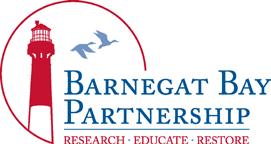
Whether you visit on your own, bring a friend, child, or grandchild, or join us as a volunteer, it’s the start of a wonderful new season – and we hope to see you!

wetlandsinstitute.org
Views From the Tower is the quarterly newsletter of The Wetlands Institute and can also be found on our website.
A non-profit organization studying, preserving, and protecting wetlands and coastal ecosystems. Founded in 1969 by Herbert Mills, Executive Director of the World Wildlife Fund.
Creating A Lasting Connection
by Jessica Ward, Wetlands Institute Supporter
down the path to the water, keeping an eye out for diamondback terrapin nests and hoping we would get to see an Osprey. If it were a rainy day, I’d spend hours looking at the fascinating animals in the aquarium and learning as much as I could about them from the kind staff. In any conditions, a trip to the Institute was something that would make my day better.
has given me incredible experiences my entire life, and I support them because I want everyone to have not only those opportunities, but a healthy, beautiful environment to enjoy them in.
Every summer since I was born, I’ve stayed with my family in Stone Harbor, and in those twenty-one summers, there has never been a year that did not include countless days visiting The Wetlands Institute. When I was young, my parents and I would spend any sunny day walking


As a college student focusing on environmental science, hearing about the important work being done to restore the marshland and aid endangered species is something I look forward to. I recently had the opportunity to volunteer for a horseshoe crab walk hosted by the Institute where I helped record population numbers and aid crabs that had been flipped over. It was a cold and rainy Friday night, but in that moment, I could not think of anything I would’ve rather been doing. It was so fulfilling to be out on that beach with those incredible animals, and that was all possible because of the Institute. The Wetlands Institute

The Marshketeers Close Out Another World Series of Birding
by Devin Griffiths, Marketing & Communications Specialist

Saturday, May 13, 3:00 AM. Though the sun is still hours from rising, The World Series of Birding is on, and for The Marshketeers, our band of intrepid birders, it’s deja vu.


They catch the first birds of the day from a team member’s driveway in the blackness of pre-dawn – Carolina
Wren, Chuck-Will’s-Widow, and Brown Thrasher: an auspicious start. On a quiet salt marsh in the northern reaches of Cape May county, they pick up the low coos of two Least Bitterns in muted conversation and the insistent “whichity-whichity-whichity” of a lone Common Yellowthroat. And then, full of carbohydrates and purpose, with daybreak still ahead of them, they’re off. For the better part of the next 24 hours they’ll search high and low, on well-worn paths and roads less traveled, for anything with feathers.
Drenched by persistent rain and harried by biting gnats throughout the afternoon, the team nonetheless persevered in their quest, tallying birds and raising funds for conservation. By day’s end, bitten and weary, they’d spotted 129 species (including 2023’s Bonus Bird, the American Oystercatcher) and, through generous support, raised close to $10,000 for the Institute’s coastal bird research and conservation work.
As the team hung up their binoculars for the day, they knew they’d notched another win for birds, for conservation, and for all of us who find joy in the company of these incredible creatures. Exhausted, they left for home secure in the knowledge that The Marshketeers and their supporters had once again made a real difference for the birds.
Horseshoe crab survey walk
The 2023 Marshketeers, breaking out the big glass. L to R: Devin Griffiths, Aidan Griffiths, Lenore Tedesco.
wetlandsinstitute.org find us on
Bonus Bird: American Oystercatcher Rose-breasted Grosbeak
Research Assistants Join the Research and Conservation Team
by Dr. Lisa Ferguson, Director of Research and Conservation
in elementary school to The Wetlands Institute and being mesmerized with everything that it encompasses. This organization and its passion for research, conservation, and education, is one of the reasons why I have fallen in love with the natural sciences field. I am extremely grateful for the opportunity to work as the Coastal Bird Research Assistant, and it feels so full circle and so surreal. Working closely with birds has always been a dream of mine and now I get to fulfill that dream working with The Wetlands Institute!”
This summer we are lucky to have two Research Assistants adding to projects in our Coastal Bird and Diamondback Terrapin programs. They each bring experience and energy that is helping our team get all the good work done!

Christine Albrecht, a recent graduate from Stockton University, is building on her studies in Environmental Science and Wildlife Management and enthusiasm for wildlife conservation by joining our Coastal Bird Program. Christine said it best: “Growing up in Cape May County, I can remember going on field trips

Sarah Broadway, a graduate from Colorado State University, brings her passion for turtle ecology and conservation and her


Coastal
Research Program
We welcomed our 2023 CCRP interns in the Luing Family Internship Program just in time for the official start of summer. After several full days of training, they began their 10-week adventure conducting their independent projects and contributing to studies in our coastal bird and diamondback terrapin programs. Join us in welcoming:
Darby Brant, Stockton University
Kaycee Doherty, Catawba College
Rachel Helt, Lebanon Valley College
Rebecca Miller, Stockton University
Oliver Puckett, Texas A&M University, Corpus Christi
Carly Shaw, Flagler College
varied experience studying herpetofauna to our diamondback terrapin and Eastern box turtle projects. Sarah shared: “Since receiving my Bachelor’s degree, I’ve held various seasonal positions and worked in many different environments, ranging from the high desert of central Oregon to the longleaf pine savanna of southern Georgia, and now the wetlands of southern New Jersey! I’ve assisted in the monitoring of six different turtle species across the eastern US, but none of them are quite like the diamondback terrapin. I’m so excited to learn more about these turtles, and all the species that inhabit this beautiful and unique ecosystem! This opportunity is a great way for me to gain a better understanding of wetland ecology and conservation.”
Environmental Education Program

And they’re off! Our Environmental Education Interns are spending 12 weeks leading public education programs and designing their own independent projects, all while immersing themselves in the unique environment of the surrounding salt marsh and barrier islands. Jumping in with both feet first, they look forward to meeting you:
Fiona Buck, Stockton University
Julia Dahms, Eckerd College
Hannah Delahaye, Towson University
Hannah Drahusz, Millersville University
Mark your calendars so you can join us to see the results of their summer projects at The Wetlands Institute’s Annual Intern Symposium on July 31!
Our summer intern positions are supported through The Larry L. Luing Family Foundation, The Barbara and Jim Summers Intern Endowment Fund, and Ward Family Foundation
Conservation
Research Assistants Sarah Broadway & Christine Albrecht preparing to repair terrapin fencing
Sarah Broadway
Christine Albrecht
Tidepool Shop
Helping people make connections to nature is at the heart of The Wetlands Institute, and the Tidepool Shop carries a variety of nature-themed books and gifts designed to fire the imagination and inspire people to explore the world around them.


One of the surest ways to engage the mind and delight the senses is with a well-crafted boardgame – and we have a selection of carefully curated games that do the trick. From the beautiful and award-winning Wingspan, to the whimsical and charming Bug Bingo, we have something for game enthusiasts of all ages There’s even a birder’s trivia game designed by the renowned David Sibley, sure to challenge even the most serious birder!




Stop in to the Tidepool Shop and bring the fun home today! As always, your purchase directly supports our important work here at The Wetlands Institute.
Devon Patchel joined The Wetlands Institute as the Administrative Coordinator in March 2023. She works closely with our Executive Director and the Development and Communications team, specifically focused on special event coordinating and fundraising efforts. Prior to joining the team here at TWI, Devon worked for Stockton University, her alma mater, first as the Program Assistant for the Holocaust and Genocide Dual Credit Program, then as the Program Director at the Sam Azeez Museum of Woodbine Heritage, a satellite campus of Stockton University.
In her leisure time, she enjoys crafts and gardening – specifically growing gourmet mushrooms. She also spends a lot of time outdoors, hiking and kayaking, and is very much looking forward to gaining a whole new understanding about the wonderful wildlife we are lucky to see when out “in nature” at the Jersey Shore.

Welcome to the Team!
Meet Devon Patchel
Go Paperless Paperless newsletters are more sustainable and they help reduce our cost so a larger portion of your gifts directly support our research, conservation, and education programs. Sign up for our e-newsletter at wetlandsinstitute.org/about-us/newsletter
thank you!
Summer Happenings
The Wetlands Institute will be open daily from 9:30am-4:30pm with all-day activities from June 19-September 4, 2023! Unless otherwise stated, all activities are free with admission and occur onsite at The Wetlands Institute. For more information, visit wetlandsinstitute.org/events.
Exploration Point
9:30 AM Monday
Bring your buckets! Meet at the trailhead at 122nd Street in Stone Harbor and explore Stone Harbor Point for awesome seashells, cool birds, and fun things that live under the sand. Suggested $3 donation to The Wetlands Institute.
Creature Feature



11:15 AM & 1:15 PM
Monday & Friday
During this live animal presentation, get up close and personal with turtles, fish, crabs, sea stars and urchins, mollusks, horseshoe crabs, or the popular animals of Finding Nemo.
Catch o’ the Day
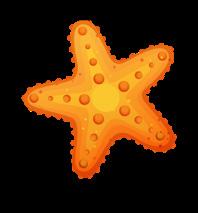
Monday, Wednesday, Friday 3:15 PM
Get your feet wet (or wear waders!) as you discover what swims in the back bays. Help us drag a seine net through the water to find crabs, shrimp, fish and more.
Salt Marsh Safari
10 AM, 12 PM & 2 PM
11 AM & 1 PM
Monday - Friday
Saturday & Sunday
Watch our award-winning film, Secrets of the Salt Marsh, then join us for an interpretive marsh walk along our elevated walkway and onto the dock overlooking Scotch Bonnet creek!
Totally Turtle Tuesday new
11 AM - 4 PM Tuesday
Every Tuesday is a day with the turtles! Meet them up-close at our Turtle Basking Station, learn about our latest research during our Creature Feature presentations, make unique turtle crafts, and join us for a special terrapin release during our noon Salt Marsh Safari.
Aquarium Feeding
3:15 PM 2:15 PM
Tuesday and Thursday Saturday
Help us feed the local marine life! We will open up feeding three times each week so you can see the burrfish eating crabs and the horseshoe crab gobbling shrimp.

Dune and Beach Walk
9:30 AM Wednesday
Meet at 48th Street and Dune Drive in Avalon for an interpretive walk along the maritime forest and dune trails to learn about the flora and fauna that call this area their home. Free to attend and generously sponsored by Avalon Free Public Library.

Horseshoe Crab Mania Thursday new
11 AM - 4 PM Thursday
Thursdays are for the Horseshoe Crabs! Meet these ancient animals up-close during our Creature Feature presentations, make horseshoe crab take-home crafts, and join us for a special horseshoe crab hatchling release during our noon Salt Marsh Safari.
Hooked on Fishing
10 AM Saturday
Go fishing! We’ll teach you how to bait a hook, cast a line, catch a fish and reel it in. We’ve even got fishing poles and bait.
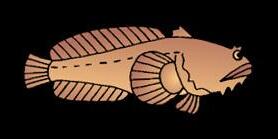

Seashell Sunday
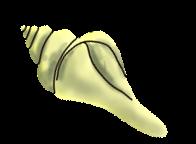
10 AM Sunday
Seashells at the seashore! Join us to learn all about seashells, how to collect them without harming the environment, and touch an assortment of live mollusks and cool artifacts.

Crabbing at the Dock
2:15 PM Sunday
Drop a line in the water and see what pinches it! We’ll provide the bait and handlines - You reel in the blue crabs!

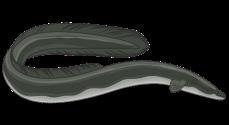


Stone Harbor Bird Sanctuary Tour
10 AM
Sunday ( June 4 - August 20)
Saturday (July 1 - August 19)




Meet us at Egret Espy Trail, 2nd Avenue Entrance in Stone Harbor, for a guided natural history and wildlife tour of the Stone Harbor Bird Sanctuary. Bring your binoculars in case we spot a few of our feathered friends along the way! Free to attend and generously sponsored by the Borough of Stone Harbor.
You may have noticed that we’re no longer open for evening hours - but don’t worry! We’ve kept the best of our evening programs and made them part of our daily schedule. You can also enjoy a virtual visit and catch up with all our cool critters anytime and anywhere, by visiting the Aquarium Bytes section of our Virtual Wetlands Experience portal on our website: wetlandsinstitute.org/aquarium-bytes.
Understanding the Condition of Marsh Edges
 by Dr. Lenore Tedesco, Executive Director
by Dr. Lenore Tedesco, Executive Director

Healthy marsh edges are sloped from the flat marsh plain down to the mud flat apron of the tidal channels. Shorter marsh grasses give way to taller grasses that are flooded more frequently by the tides. These edges teem with life.
the most damage. Reserve the narrow marsh-bordered tidal channels for paddleboards and kayaks. You can also join us as a volunteer in a new program to help us map the condition of marsh shorelines in our area (see below right). The data you collect will be used to help identify areas that would benefit from restoration, and become part of a larger collection effort.
Many marsh edges however, are highly erosional with vertical scarps and ledges, and blocks that drop into the adjacent channels. Some of this is caused by storms – predominantly to the north and west facing margins of the marsh. Unfortunately, much more is the product of boat wakes damaging the marsh edge. In some places of focused boat wakes, marshes are eroding back several feet per year.

How can you help? Avoid high-speed boating, tubing, and wakeboarding in narrow tidal channels where boat wakes do
Summer on the Water
Back Bay Birding and Wildlife Tours
Board The Skimmer to cruise the beautiful back bays of Stone Harbor. Highlights include bird watching, salt marsh wildlife viewing and marine life touch tanks. Trips depart weekly, Tuesday through Thursday, with both daytime and evening tours available. Call 609-884-3100 for reservations or book online at skimmer.com.
Back Bay Kayaking
Kayaking has become a very popular way to explore the marsh. Join us Monday through Friday, day or evening, for a guided kayak tour of the coastal marsh ecosystem in a single or tandem kayak. Call 609-3681211 for reservations.

The Wetlands Institute is working on marsh restoration techniques with our partners in the Seven Mile Island Innovation Lab. While we have been documenting the stress to marshes from increased flooding and focusing on using clean dredged material to increase marsh elevation, recent projects have begun to shift emphasis to marsh edges. These projects are building protective barriers to help intercept waves and protect marsh edges from further erosion.
Reservations required for all activities. Please check our website for complete schedule and pricing. Unless otherwise stated, all activities leave from The Wetlands Institute dock.
wetlandsinstitute.org find us on
Image credt: Partnership for Delaware Estuary
1075 Stone Harbor Blvd.

Stone Harbor, NJ 08247-1424
A non-profit organization studying, preserving, and protecting wetlands and coastal ecosystems



As a conservation organization, we have a special responsibility to address the global challenges of climate change and sustainability. We are committed to minimizing environmental impacts in all aspects of our operations. Visit our website at wetlandsinstitute.org/about-us/ sustainability/ for more on our sustainability initiatives.
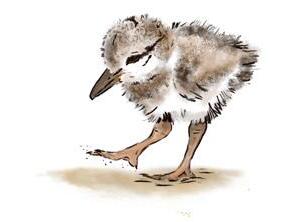
BENEFITING THE WETLANDS INSTITUTE WETLANDSINSTITUTE.ORG/SC2023 TICKETS AND EVENT INFORMATION PRESENTED BY BILL & ROSEMARY HANKOWSKY THE DILLER FAMILY & FOUNDATION When Saturday July 22, 2023 6 - 9 PM Where ICONA Avalon 7849 Dune Dr. Avalon, NJ 08202 S a ve the Dat e! THE 9 TH ANNUAL Celebrationsummer
Views from theTower ~ *$12,000 if all 240 tickets are sold. No substitution of the offered prize may be made. Winner does not need to be present to win. Must be 18 years of age or older to participate. If you or someone you know has a gambling problem, call toll-free 1-800-GAMBLER (1-800-426-2537). Net proceeds will be used to further environmental education and conservation programs at The Wetlands Institute. RA# 06-23 481-5-25895 Middle Township. The Wetlands Institute’s Call 609.368.1211 or stop in to buy tickets. Drawing: December 8, 2023 at The Wetlands Institute Only 240 tickets being sold... Get yours today!
 by Rae Griffiths, Office Assistant
by Rae Griffiths, Office Assistant







































 by Dr. Lenore Tedesco, Executive Director
by Dr. Lenore Tedesco, Executive Director














